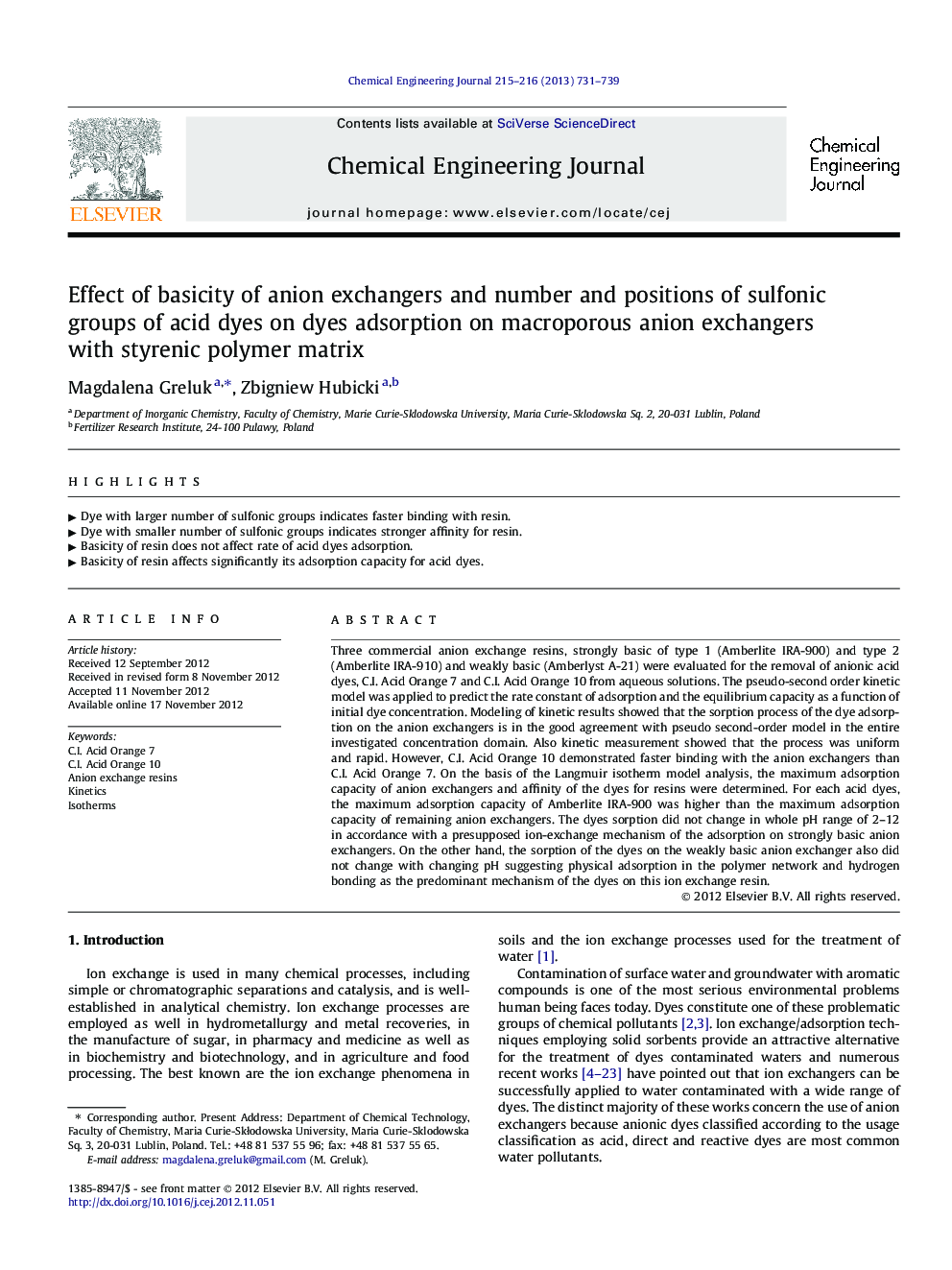| Article ID | Journal | Published Year | Pages | File Type |
|---|---|---|---|---|
| 148980 | Chemical Engineering Journal | 2013 | 9 Pages |
Three commercial anion exchange resins, strongly basic of type 1 (Amberlite IRA-900) and type 2 (Amberlite IRA-910) and weakly basic (Amberlyst A-21) were evaluated for the removal of anionic acid dyes, C.I. Acid Orange 7 and C.I. Acid Orange 10 from aqueous solutions. The pseudo-second order kinetic model was applied to predict the rate constant of adsorption and the equilibrium capacity as a function of initial dye concentration. Modeling of kinetic results showed that the sorption process of the dye adsorption on the anion exchangers is in the good agreement with pseudo second-order model in the entire investigated concentration domain. Also kinetic measurement showed that the process was uniform and rapid. However, C.I. Acid Orange 10 demonstrated faster binding with the anion exchangers than C.I. Acid Orange 7. On the basis of the Langmuir isotherm model analysis, the maximum adsorption capacity of anion exchangers and affinity of the dyes for resins were determined. For each acid dyes, the maximum adsorption capacity of Amberlite IRA-900 was higher than the maximum adsorption capacity of remaining anion exchangers. The dyes sorption did not change in whole pH range of 2–12 in accordance with a presupposed ion-exchange mechanism of the adsorption on strongly basic anion exchangers. On the other hand, the sorption of the dyes on the weakly basic anion exchanger also did not change with changing pH suggesting physical adsorption in the polymer network and hydrogen bonding as the predominant mechanism of the dyes on this ion exchange resin.
• Dye with larger number of sulfonic groups indicates faster binding with resin. • Dye with smaller number of sulfonic groups indicates stronger affinity for resin. • Basicity of resin does not affect rate of acid dyes adsorption. • Basicity of resin affects significantly its adsorption capacity for acid dyes.
